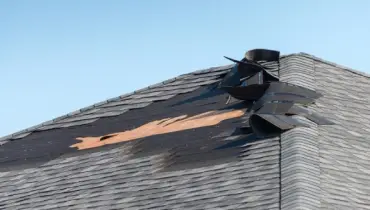
Assessing roof damage after a storm is complex and risky. Rainbow Restoration highlights key steps for homeowners.
|
Recovering from severe weather can be a daunting task. And even though your first instinct may be to check your house for wind or hail damage, climbing up on the roof can be dangerous. According to the American Academy of Orthopedic Surgeons, “every year 500,000 people are treated for ladder- or roof-related injuries and approximately 300 of these incidents prove to be fatal.” So, keep yourself safe after a storm and only look for damage in areas you can check without putting yourself at risk. Remember, you and your family are the most important survivors of severe weather—leave the tricky examinations and repairs to the professionals.
Indoor Inspections
Performing an indoor, room-by-room inspection after a storm is not only safer than getting on the roof but can detect many signs of roof damage or water leaks without having to climb a ladder. Start your inspection on the side of the house that received the brunt of the storm’s intensity—which is usually in the direction from where the storm approached—and work your way across the house. Check in the corners and around the bases of light fixtures and ceiling fans for signs of moisture. If the sun is shining, go up into the attic and look for sunlight passing through the plywood. If you see light, this may indicate damage to your roof’s deck, which could cause leaking and water damage. While up in the attic, use a flashlight to look for dark stains in the corners or streaks along the inclined edges. These marks could be caused by leaks coming from damaged areas or through the ventilation.
Outdoor Inspection
Even though it’s not safe to climb up on the roof, there are still several ways you can safely look for storm damage from the outside.
-
Walk around the house to see if any shingles or other roof materials are on the ground.
-
Look for tree limbs or other storm debris on the roof.
-
Do a visual inspection of the roof from the ground with your eyes, binoculars, or even a camera drone.
-
Does the flashing on your chimney or vents look bent or detached?
-
Do you see any missing, curled, or cracked shingles?
-
Are there any dark patches caused by granule fallout?
-
If you do see damage, call in the professionals as soon as you can.
Related Topic: After the Flood—Watch Out for These 7 Hazardous Situations
Other Dangers to Avoid
Using a ladder or walking around on your roof aren’t the only dangers you should avoid after a storm. To make sure you stay safe, keep away for these situations.
- Don’t walk or drive through standing water. Not only could it be contaminated with harmful bacteria, but it might also be hiding debris or sinkholes.
- Don’t touch downed power lines. Call the fire department or the utility company to deal with them.
- Don’t clear debris without protective clothing. It could be riddled with rusty nails, broken glass, or other things that can be hazardous to your health.
- Don’t climb trees to remove broken limbs—this could be even more dangerous than getting on the roof!
Call Rainbow Restoration
If you suspect your roof was damaged during severe weather, Rainbow Restoration can help. Our experts will inspect your roof and, if there’s damage, we offer roof-tarping services that waterproof your roof until it can be fixed. In fact, if you live in a geographic location where windstorms, tornadoes, or hurricanes are common, we can do a preventative tarp-over for your roof to prevent wind damage. Our storm services have you covered with expert and efficient debris removal and cleanup, water removal and drying, and home reconstruction services. If you do find water damage, deal with it quickly using Rainbow’s water damage restoration and mold removal and remediation services. Schedule an appointment with Rainbow as quickly as possible, to prevent further damage and get your life back up and running again.
